 Search by Keyword
|
"JULIA"
(John Lennon – Paul McCartney)
The days when all four Beatles played on every Beatles song were long gone by 1968. An absent Beatle happened very rarely through 1964 but officially became part of their routine on June 14th, 1965, when Paul McCartney boldly took the spotlight as the only Beatle performing on his composition "Yesterday." Paul gained confidence enough to continue this practice from this point on, three tracks on the "White Album" featuring himself as the only band member performing. One of these, "Mother Nature's Son," features Paul with outside musicians while the other two, "Blackbird" and "Wild Honey Pie," feature Paul as a solo performer.
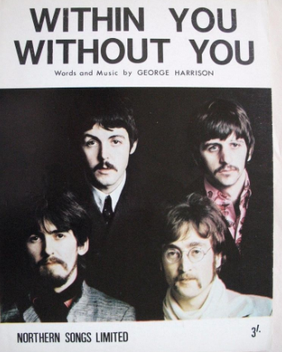 With George and even Ringo having already recorded Beatles tracks containing only themselves and outside musicians (“Within You Without You” and “Good Night” respectively), one might think that John Lennon would have jumped on this bandwagon much sooner and in earnest, especially with his confidence on a big high during the “White Album” sessions of 1968. This was not the case. However, with a full double-album's worth of material already recorded, and with encouragement from fellow bandmate and longtime friend Paul McCartney, John did record one completely solo performance to finish off the album, his only solo performance in The Beatles catalog, this being his beautifully touching and deeply personal ballad “Julia.” With George and even Ringo having already recorded Beatles tracks containing only themselves and outside musicians (“Within You Without You” and “Good Night” respectively), one might think that John Lennon would have jumped on this bandwagon much sooner and in earnest, especially with his confidence on a big high during the “White Album” sessions of 1968. This was not the case. However, with a full double-album's worth of material already recorded, and with encouragement from fellow bandmate and longtime friend Paul McCartney, John did record one completely solo performance to finish off the album, his only solo performance in The Beatles catalog, this being his beautifully touching and deeply personal ballad “Julia.”
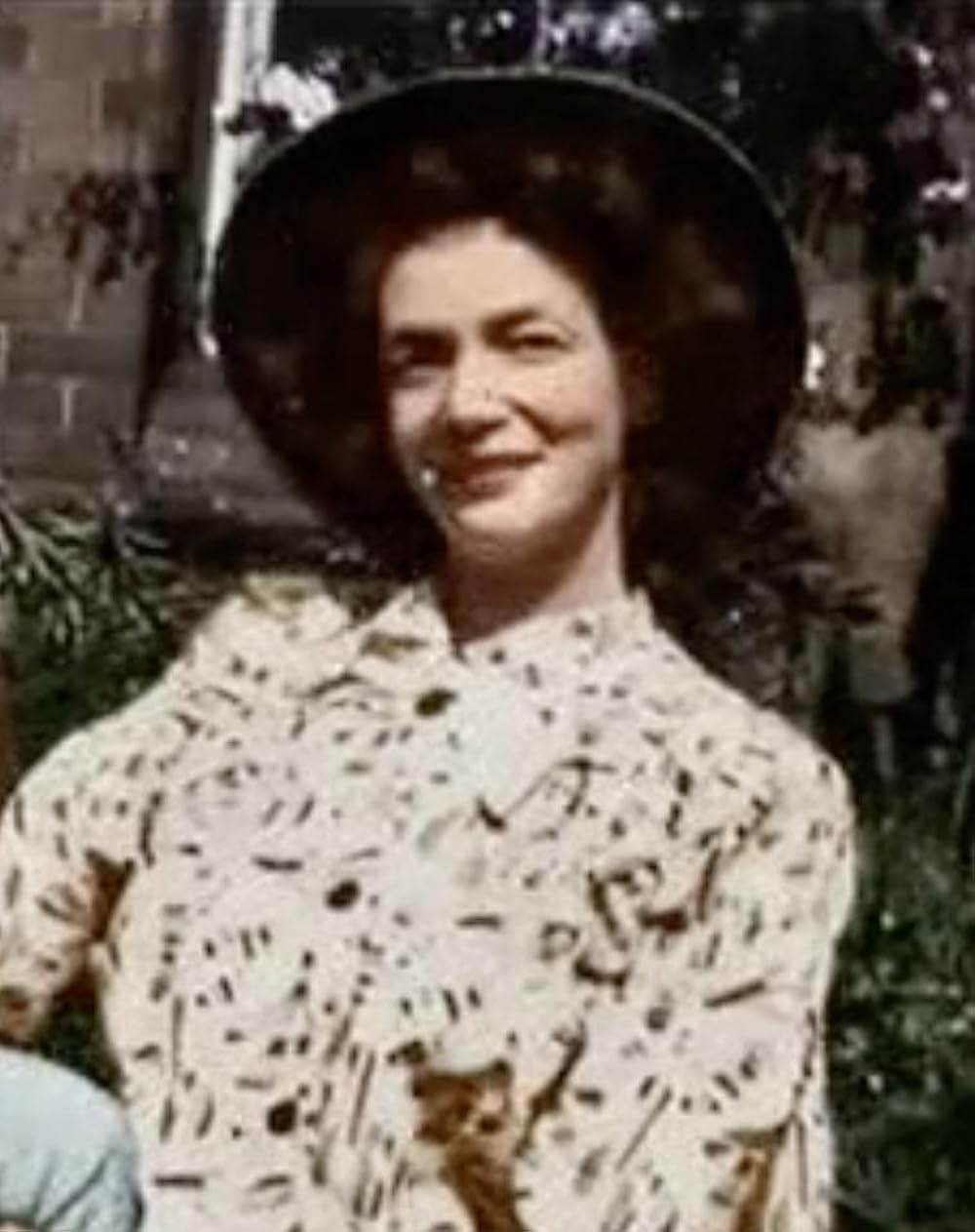
John Lennon's mother Julia
Songwriting History
In John's Playboy interview of 1980, he gave this explanation when asked about the song: "Julia was my mother. The song was actually a combination of an imagery of Yoko and my mother blended into one, you see."
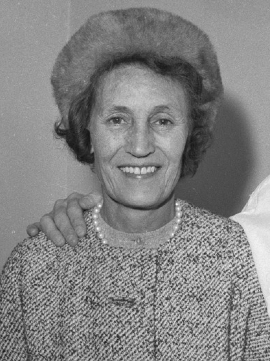 John Lennon was raised for most of his formative years by his Aunt Mimi but developed a strong and loving relationship with his mother Julia, especially during his teen years. It was his mother who encouraged him greatly to pursue his love of music, unlike his Aunt who viewed it as more of a distraction from developing toward a "proper" career choice. In contrast, Julia bought him his first guitar, taught him his first chords to play on that guitar (although they were banjo chords), and supported him in his aspirations as a musician, sharing his love for rock 'n' roll. Her tragic death by automobile accident on July 15th, 1958 devastated young John. “I lost her twice,” John stated, “once as a five year old when I was moved in with my auntie, and once again when she physically died...It was the worst thing that ever happened to me. We'd caught up so much. We could communicate. We got on. She was great.” John Lennon was raised for most of his formative years by his Aunt Mimi but developed a strong and loving relationship with his mother Julia, especially during his teen years. It was his mother who encouraged him greatly to pursue his love of music, unlike his Aunt who viewed it as more of a distraction from developing toward a "proper" career choice. In contrast, Julia bought him his first guitar, taught him his first chords to play on that guitar (although they were banjo chords), and supported him in his aspirations as a musician, sharing his love for rock 'n' roll. Her tragic death by automobile accident on July 15th, 1958 devastated young John. “I lost her twice,” John stated, “once as a five year old when I was moved in with my auntie, and once again when she physically died...It was the worst thing that ever happened to me. We'd caught up so much. We could communicate. We got on. She was great.”
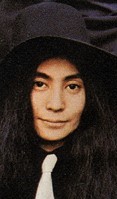 John describes first meeting artist Yoko Ono in November of 1966 during an art exhibit she was holding at Indica Gallery in London, thereafter becoming involved artistically and romantically which resulted in their marriage on March 20th, 1969. During the recording of the “White Album,” John insisted on Yoko's presence in the studio with him, both of them wanting to be involved in each others' lives as much as possible. During this time, and throughout their marriage, John was known to refer to Yoko as “Mother,” this reflecting the matriarchal influence she had on his life. John describes first meeting artist Yoko Ono in November of 1966 during an art exhibit she was holding at Indica Gallery in London, thereafter becoming involved artistically and romantically which resulted in their marriage on March 20th, 1969. During the recording of the “White Album,” John insisted on Yoko's presence in the studio with him, both of them wanting to be involved in each others' lives as much as possible. During this time, and throughout their marriage, John was known to refer to Yoko as “Mother,” this reflecting the matriarchal influence she had on his life.
With this in mind, one can see how easy it would have been for John to combine his sentiments for the two most influential women in his life into one song. This is reflected within his lyrics, “Ocean child” referring to the Japanese meaning of the name Yoko (literally, “child of the sea”).
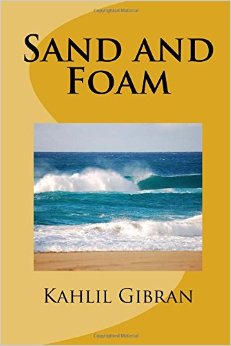 Other lyrical ideas contained in the song were derived from Lebanese poet and philosopher Kahlil Gibran, his writings from the 1920's gaining popularity in the '60s. For instance, the opening line of “Julia,” namely, “Half of what I say is meaningless, but I say it just to reach you” is derived from Gibran's book of writings and drawings “Sand And Foam” (1926) which includes the line “Half of what I say is meaningless; but I say it so the other half may reach you.” Another line from “Julia,” “When I cannot sing my heart, I can only speak my mind” is inspired by Gibran's line “When life does not find a singer to sing her heart she produces a philosopher to speak her mind.” Other lyrical ideas contained in the song were derived from Lebanese poet and philosopher Kahlil Gibran, his writings from the 1920's gaining popularity in the '60s. For instance, the opening line of “Julia,” namely, “Half of what I say is meaningless, but I say it just to reach you” is derived from Gibran's book of writings and drawings “Sand And Foam” (1926) which includes the line “Half of what I say is meaningless; but I say it so the other half may reach you.” Another line from “Julia,” “When I cannot sing my heart, I can only speak my mind” is inspired by Gibran's line “When life does not find a singer to sing her heart she produces a philosopher to speak her mind.”
 During John's stay in India, Yoko would send letters to him with phrases that would also be an inspiration for the song. “She would write things like 'I am a cloud. Watch for me in the sky,'” John remembers. Picturesque phrases like these, combining nature with human characteristics, appeared in the song as “seashell eyes,” “silent cloud,” “windy smile” and “hair of floating sky,” among others. During John's stay in India, Yoko would send letters to him with phrases that would also be an inspiration for the song. “She would write things like 'I am a cloud. Watch for me in the sky,'” John remembers. Picturesque phrases like these, combining nature with human characteristics, appeared in the song as “seashell eyes,” “silent cloud,” “windy smile” and “hair of floating sky,” among others.
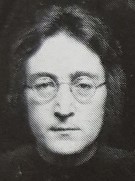 Paul has never claimed to have written any part of “Julia,” instead referring to it as “a very good song.” Paul has also stated, regarding John's mother Julia, "She was a very beautiful woman; very good looking, with long red hair. When you're the son of a very beautiful woman, it's got to add something." However, when asked in 1972 about the song, John claimed “Yoko helped me with this one.” The above mentioned lyrical inspirations, undoubtedly, were what John must have meant as being 'help' from Yoko. Paul has never claimed to have written any part of “Julia,” instead referring to it as “a very good song.” Paul has also stated, regarding John's mother Julia, "She was a very beautiful woman; very good looking, with long red hair. When you're the son of a very beautiful woman, it's got to add something." However, when asked in 1972 about the song, John claimed “Yoko helped me with this one.” The above mentioned lyrical inspirations, undoubtedly, were what John must have meant as being 'help' from Yoko.
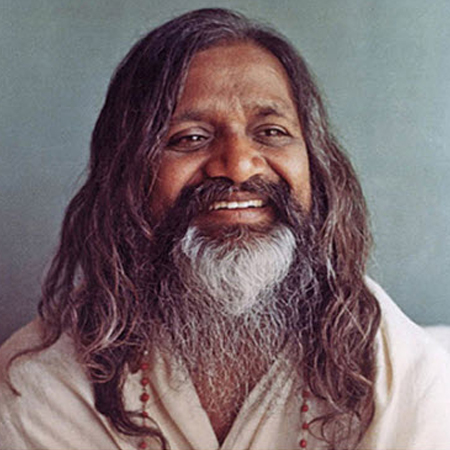 “That was written in India; we wrote tons of songs in India,” John related in 1980. The Beatles spent the spring of 1968 in Rishekesh, India studying and practicing Transcendental Meditation with the Maharishi Mahesh Yogi, meanwhile writing many songs that ended up comprising most of what became known as the “White Album” later that year. “That was written in India; we wrote tons of songs in India,” John related in 1980. The Beatles spent the spring of 1968 in Rishekesh, India studying and practicing Transcendental Meditation with the Maharishi Mahesh Yogi, meanwhile writing many songs that ended up comprising most of what became known as the “White Album” later that year.
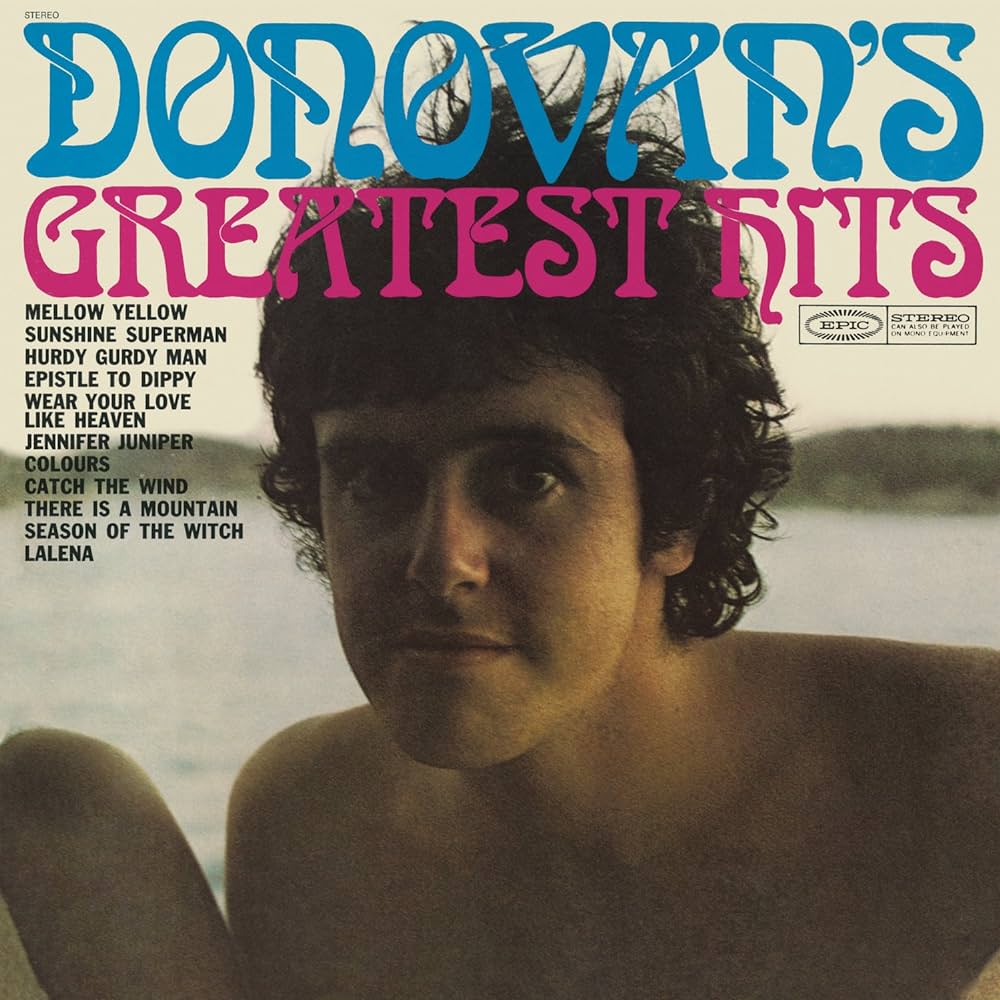 As for the song's acoustic guitar structure, recording artist Donovan, who was also present in India at the time, relates: “Some afternoons we would gather at one of our pads and play the acoustic guitars we had all brought with us...John was keen to learn the finger-style guitar I played and he was a good student...John wrote 'Julia' and 'Dear Prudence' based on the picking I taught him.” As for the song's acoustic guitar structure, recording artist Donovan, who was also present in India at the time, relates: “Some afternoons we would gather at one of our pads and play the acoustic guitars we had all brought with us...John was keen to learn the finger-style guitar I played and he was a good student...John wrote 'Julia' and 'Dear Prudence' based on the picking I taught him.”
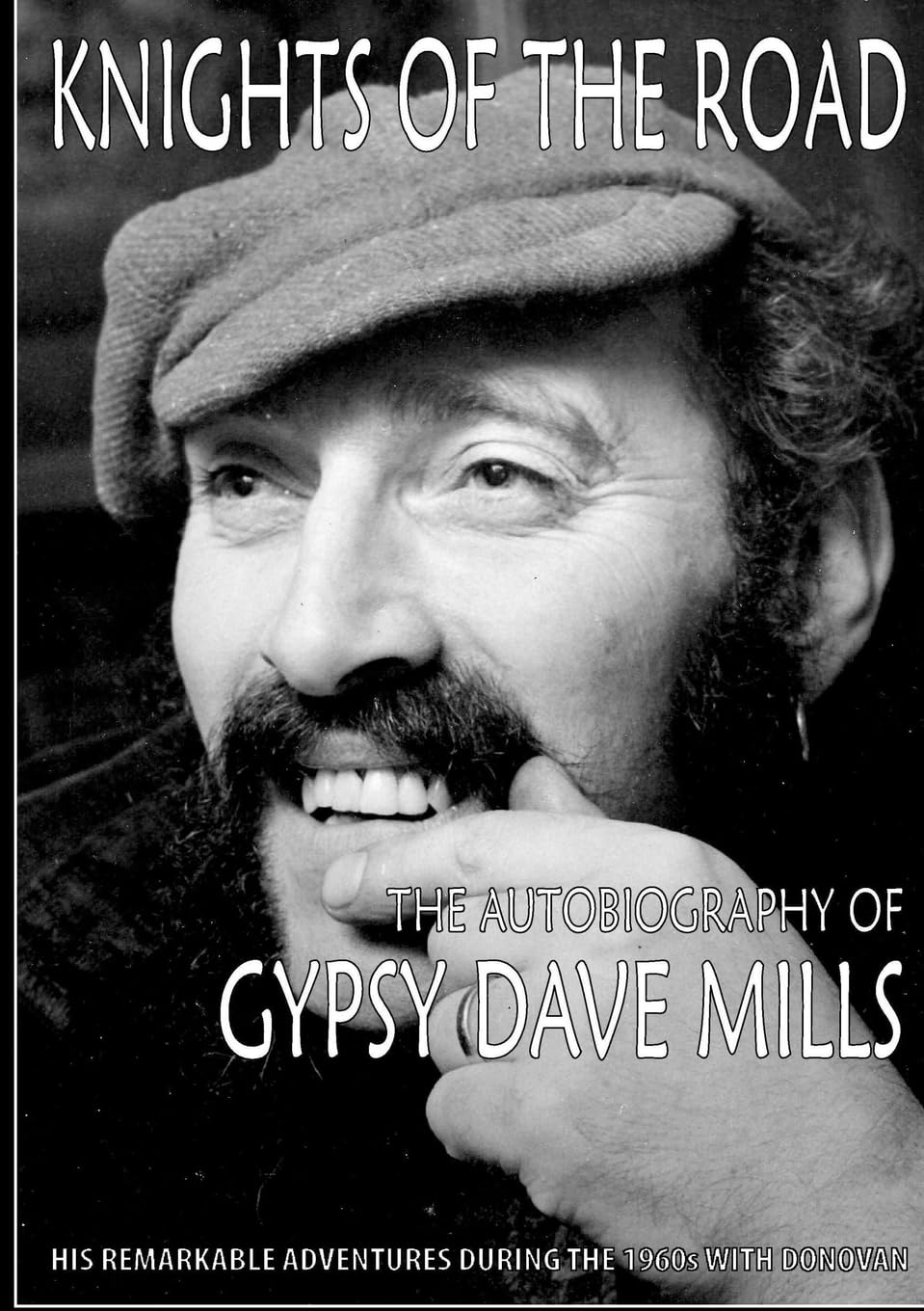 Paul concurs: “The interesting thing for me on 'Julia' is the finger-picking style. He learned to finger-pick off Donovan or Gypsy Dave, I think John said it was Gypsy Dave but the two of them were fairly inseparable and they both would have known it, and if they were both sitting down picking, then who is to know? It was a folk picking style, and he was the only one in the band who could ever do that properly.” This finger picking style has become known as “Travis-picking." Paul concurs: “The interesting thing for me on 'Julia' is the finger-picking style. He learned to finger-pick off Donovan or Gypsy Dave, I think John said it was Gypsy Dave but the two of them were fairly inseparable and they both would have known it, and if they were both sitting down picking, then who is to know? It was a folk picking style, and he was the only one in the band who could ever do that properly.” This finger picking style has become known as “Travis-picking."
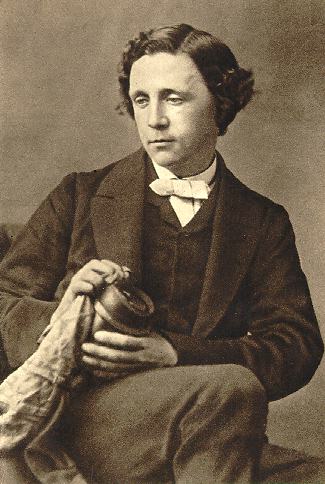 A 2016 interview with Donovan sheds some more light on the writing of "Julia," inferring that he had more to do with the song than just the finger-picking style. "As John was in this period of tuition with me, he told me he wanted to write a song about his mother. He said, 'Donovan, you're the king of children's songs. Can you help me?' I asked him what exactly it was that he wanted to to. He said, 'I want to write a song about the childhood that I never really had with my mother.' He asked me to help him with the images that he could use in lyrics for a song about this subject. So I said, 'Well, when you think of the song, where do you imagine yourself?' And John said, 'I'm at the beach and I'm holding hands with my mother and we're walking together.' And I helped him with a couple of lines, 'Seashell eyes / windy smile' - for the Lewis Carroll 'Alice In Wonderland' feel that John loved so much. And the song, which you may know, is the amazing 'Julia.' I haven't told many people that before.” A 2016 interview with Donovan sheds some more light on the writing of "Julia," inferring that he had more to do with the song than just the finger-picking style. "As John was in this period of tuition with me, he told me he wanted to write a song about his mother. He said, 'Donovan, you're the king of children's songs. Can you help me?' I asked him what exactly it was that he wanted to to. He said, 'I want to write a song about the childhood that I never really had with my mother.' He asked me to help him with the images that he could use in lyrics for a song about this subject. So I said, 'Well, when you think of the song, where do you imagine yourself?' And John said, 'I'm at the beach and I'm holding hands with my mother and we're walking together.' And I helped him with a couple of lines, 'Seashell eyes / windy smile' - for the Lewis Carroll 'Alice In Wonderland' feel that John loved so much. And the song, which you may know, is the amazing 'Julia.' I haven't told many people that before.”
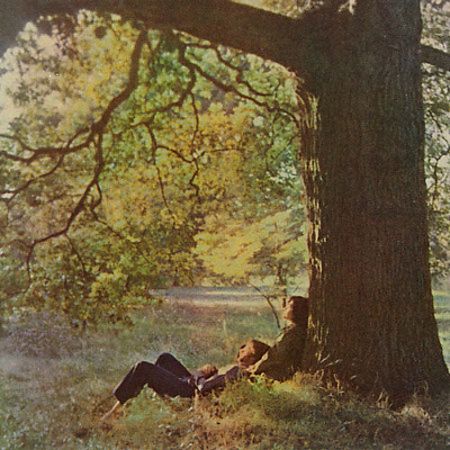 “Julia” appears to have been the first song that John wrote during his India trip, his original handwritten lyric sheet numbering this song as #1 while other songs, such as "Dear Prudence" and "Revolution" feature different number designations. One verse on this lyric sheet consists of the lyrics "Beautiful Julia / silent cloud calls me / so I sing a song of love for you, Julia." This song was only the first to have been written by John in homage to his late mother. Two others, both from his critically acclaimed solo album “Plastic Ono Band,” were obvious tributes to her as well. The first, entitled “Mother,” is a stark but emotional display of what his life had been like without the continued emotional support of his mother. The second, the album closer “My Mummy's Dead,” is a deadpan, eerie depiction of reality twelve years after his mother's untimely death. “Julia” appears to have been the first song that John wrote during his India trip, his original handwritten lyric sheet numbering this song as #1 while other songs, such as "Dear Prudence" and "Revolution" feature different number designations. One verse on this lyric sheet consists of the lyrics "Beautiful Julia / silent cloud calls me / so I sing a song of love for you, Julia." This song was only the first to have been written by John in homage to his late mother. Two others, both from his critically acclaimed solo album “Plastic Ono Band,” were obvious tributes to her as well. The first, entitled “Mother,” is a stark but emotional display of what his life had been like without the continued emotional support of his mother. The second, the album closer “My Mummy's Dead,” is a deadpan, eerie depiction of reality twelve years after his mother's untimely death.
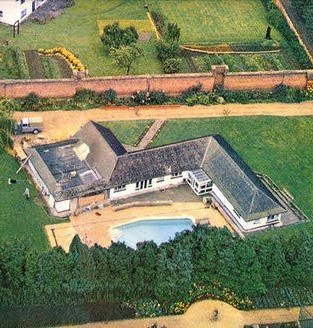
George Harrison's "Kinfauns" home, Esher, Surrey
Recording History
John recorded various demo versions of "Julia" in 1968, four of which have surfaced as bootleg recordings. While one of these versions is an instrumental, the rest consist simply of Lennon on guitar and vocals, demonstrating the same Travis-picking style used on the official released version.
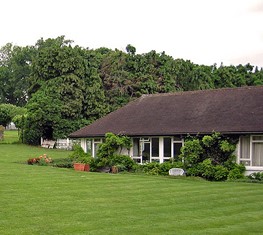 Three of these demos were undoubtedly recorded sometime in May of 1968 in the music room of John's Kenwood residence in Weybridge, Surrey. The fourth demo, recorded at George Harrison's "Kinfauns" home in Esher, Surrey on May 29th, 1968, consists of John double-tracked on acoustic guitar and featuring John's overlapped vocals as heard on the released version as well as some experimental harmonies from Paul, such as on the line "so I sing a song of love," and elsewhere. This recording begins with John tenderly saying, "Hello Paul," to which Paul sweetly answers "Hello." George, who apparently is operating the tape machine, confirms "okay" to signal John to begin the song, which prompts the singer to ask "If you could turn the level just of this mike down" for the overdub track he was just about to record. Three of these demos were undoubtedly recorded sometime in May of 1968 in the music room of John's Kenwood residence in Weybridge, Surrey. The fourth demo, recorded at George Harrison's "Kinfauns" home in Esher, Surrey on May 29th, 1968, consists of John double-tracked on acoustic guitar and featuring John's overlapped vocals as heard on the released version as well as some experimental harmonies from Paul, such as on the line "so I sing a song of love," and elsewhere. This recording begins with John tenderly saying, "Hello Paul," to which Paul sweetly answers "Hello." George, who apparently is operating the tape machine, confirms "okay" to signal John to begin the song, which prompts the singer to ask "If you could turn the level just of this mike down" for the overdub track he was just about to record.
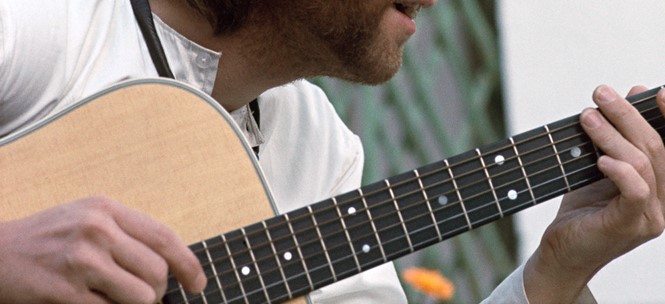 This demo shows that the lyrics were completely written at this point, however certain phrases were sung in a different order at times. Additional repeated verses were also contained here, as well as two extra instrumental measures at the end of the bridge and a meandering conclusion which signifies that a proper ending hadn't been figured out yet. This “Kinfauns” demo, which was eventually released on the Super Deluxe 50th Anniversary edition of the "White Album," shows John still developing the structure and struggling with the difficult finger-picking style, the previous home demos also showing the same signs of difficulty. This demo shows that the lyrics were completely written at this point, however certain phrases were sung in a different order at times. Additional repeated verses were also contained here, as well as two extra instrumental measures at the end of the bridge and a meandering conclusion which signifies that a proper ending hadn't been figured out yet. This “Kinfauns” demo, which was eventually released on the Super Deluxe 50th Anniversary edition of the "White Album," shows John still developing the structure and struggling with the difficult finger-picking style, the previous home demos also showing the same signs of difficulty.
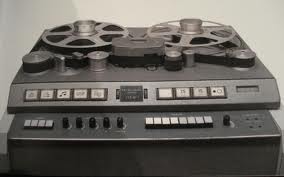 After four-and-a-half months in the studio recording what became the “White Album,” John finally premiered “Julia” in EMI Studio Two on October 13th, 1968. This was a Sunday, weekend days being implemented by the band because of the deadline for the finished album being so near. This, in fact, was the final song recorded for the album, two previously recorded songs being deleted (“Not Guilty” and “What's The New Mary Jane”) in favor of including “Julia” on the completed album. Even though The Beatles had been utilizing EMI Studio's 8-track recording machines by this time, it apparently was determined that eight tracks were not needed for this somewhat simple recording; therefore, it was decided to use their tried-and-true four-track system. After four-and-a-half months in the studio recording what became the “White Album,” John finally premiered “Julia” in EMI Studio Two on October 13th, 1968. This was a Sunday, weekend days being implemented by the band because of the deadline for the finished album being so near. This, in fact, was the final song recorded for the album, two previously recorded songs being deleted (“Not Guilty” and “What's The New Mary Jane”) in favor of including “Julia” on the completed album. Even though The Beatles had been utilizing EMI Studio's 8-track recording machines by this time, it apparently was determined that eight tracks were not needed for this somewhat simple recording; therefore, it was decided to use their tried-and-true four-track system.
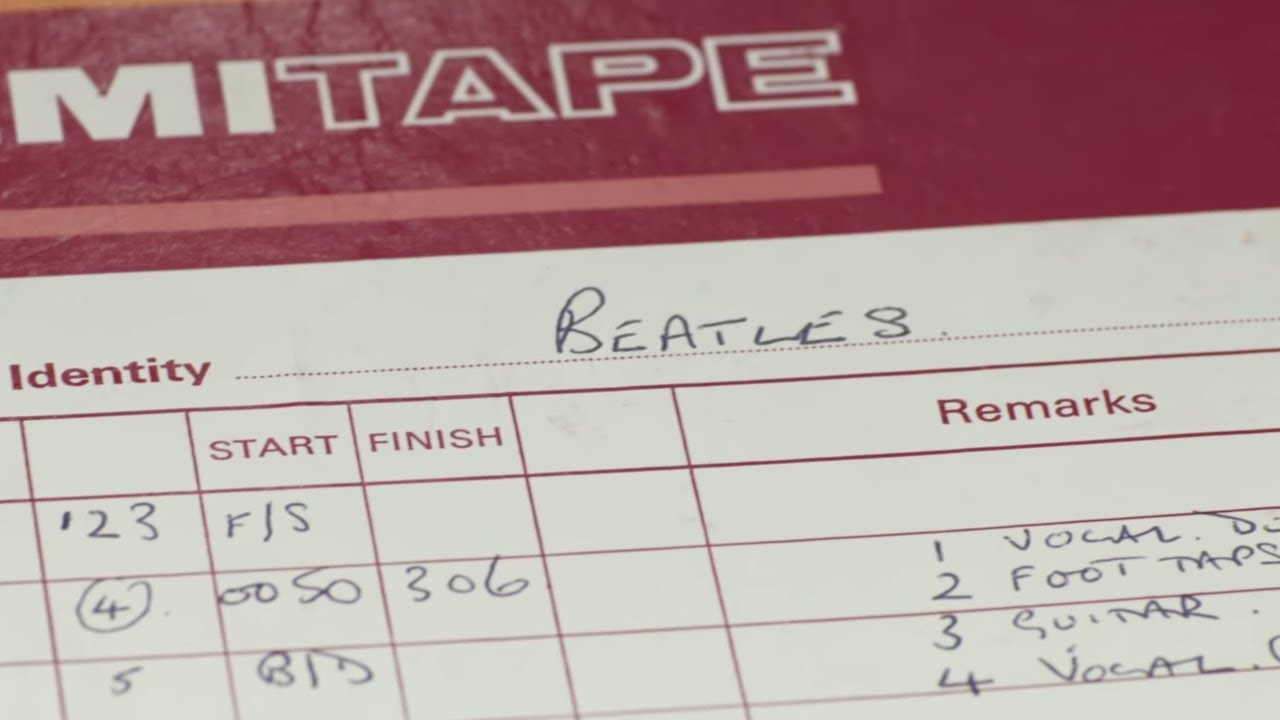 Documentation shows the session beginning at 7 pm, John filling a good portion of the four-track tape with rehearsals of himself playing the song on his Gibson J-160E acoustic guitar and singing simultaneously. He was rehearsing the song in the key of C, trying a variety of ways of suitably presenting it. These rehearsals would be later wiped from the tape when he was ready to begin proper takes of the song, but 4:25 of these rehearsals remained at the end of the tape as discovered when the production team was preparing for the 50th Anniversary "White Album" releases. Documentation shows the session beginning at 7 pm, John filling a good portion of the four-track tape with rehearsals of himself playing the song on his Gibson J-160E acoustic guitar and singing simultaneously. He was rehearsing the song in the key of C, trying a variety of ways of suitably presenting it. These rehearsals would be later wiped from the tape when he was ready to begin proper takes of the song, but 4:25 of these rehearsals remained at the end of the tape as discovered when the production team was preparing for the 50th Anniversary "White Album" releases.
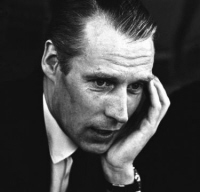 "Is it better standing up, ya think?," John asks producer George Martin and Paul, who are both in the control room. As he adjusts his microphones, John admits, "It's very hard to sing this, ya know," which prompts George Martin to concur, "It's a very hard song, John." "Maybe I should strum it first," John replies, trying to make it a little easier to play. He then runs through nearly two verses strumming it on guitar, abondoning the finger-picking style taught to him by Donovan in India. "Do you think it's better like that? I can sing it better but I can't play it better," he states, adding, "I'll try picking it again but just slightly faster," before he runs through nearly the full song in the original Travis-picking style. He concludes the song by mockingly fumbling with his guitar while George Martin confirms his approval, which prompts John to reply, "Yes,,.yeah, it is better" as the tape abruptly ends in order to be rewound in preparation for the proper takes to begin. "Is it better standing up, ya think?," John asks producer George Martin and Paul, who are both in the control room. As he adjusts his microphones, John admits, "It's very hard to sing this, ya know," which prompts George Martin to concur, "It's a very hard song, John." "Maybe I should strum it first," John replies, trying to make it a little easier to play. He then runs through nearly two verses strumming it on guitar, abondoning the finger-picking style taught to him by Donovan in India. "Do you think it's better like that? I can sing it better but I can't play it better," he states, adding, "I'll try picking it again but just slightly faster," before he runs through nearly the full song in the original Travis-picking style. He concludes the song by mockingly fumbling with his guitar while George Martin confirms his approval, which prompts John to reply, "Yes,,.yeah, it is better" as the tape abruptly ends in order to be rewound in preparation for the proper takes to begin.
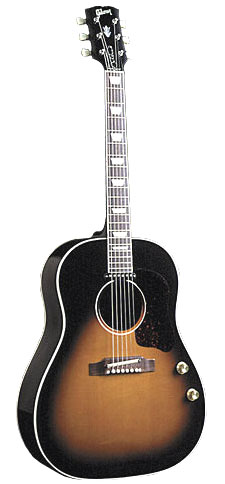 Three proper takes of the rhythm track were then recorded by John, a decision being made to apply a capo on the second fret of his guitar to raise the key from C major to D major. "Take two," which was included on the 1996 compilation album "Anthology 3," was John's attempt at capturing the definitive acoustic guitar track onto which he would overdub vocal performances. He did shakily sing vocals at the beginning of the song and then momentarily following the bridge, but his mess-up during the next verse deemed this take unusable, which ended the performance in subdued laughter. After Paul admits from the control room, using the "talkback" key, that John was close to getting the song to an acceptable condition until his final flub, John replies, "It was till then." Paul follows with, "Try it again. There were one or two little discrepancies." Three proper takes of the rhythm track were then recorded by John, a decision being made to apply a capo on the second fret of his guitar to raise the key from C major to D major. "Take two," which was included on the 1996 compilation album "Anthology 3," was John's attempt at capturing the definitive acoustic guitar track onto which he would overdub vocal performances. He did shakily sing vocals at the beginning of the song and then momentarily following the bridge, but his mess-up during the next verse deemed this take unusable, which ended the performance in subdued laughter. After Paul admits from the control room, using the "talkback" key, that John was close to getting the song to an acceptable condition until his final flub, John replies, "It was till then." Paul follows with, "Try it again. There were one or two little discrepancies."
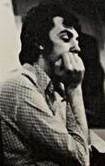 John replies, "It was just the one, wasn't it?," refering to his final guitar mistake, Paul then repeatedly complimenting him with how "great" he's doing. "Couldn't I go from there, ya know?" John asks, wondering if an edit could be performed at the point of the final flub, adding "'cause that one was perfect, wasn't it?" Paul suggested, "It was great, that one. We could drop in," or edit that performance with another one. But, in the end, it was decided to go for another full take of the song. John replies, "It was just the one, wasn't it?," refering to his final guitar mistake, Paul then repeatedly complimenting him with how "great" he's doing. "Couldn't I go from there, ya know?" John asks, wondering if an edit could be performed at the point of the final flub, adding "'cause that one was perfect, wasn't it?" Paul suggested, "It was great, that one. We could drop in," or edit that performance with another one. But, in the end, it was decided to go for another full take of the song.
 "Take three," John's final attempt, became the keeper as far as the guitar was concerned. Onto this John double-tracked his acoustic guitar and then layered three tracks of vocals, one overlapping the other in strategic spots where the word "Julia" from the previous verse was sung simultaneous to the word "Julia" in the verse that followed it, and then double-tracked (and even triple-tracked) his vocals in other spots. At approximately 1 am the following morning, the recording of the song was complete. "Take three," John's final attempt, became the keeper as far as the guitar was concerned. Onto this John double-tracked his acoustic guitar and then layered three tracks of vocals, one overlapping the other in strategic spots where the word "Julia" from the previous verse was sung simultaneous to the word "Julia" in the verse that followed it, and then double-tracked (and even triple-tracked) his vocals in other spots. At approximately 1 am the following morning, the recording of the song was complete.
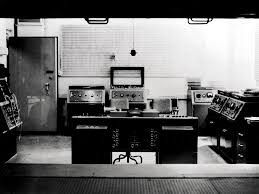 Both the stereo and mono mixes of the song were created on this day as well, this taking place in the control room of EMI Studio Two by George Martin and engineers Ken Scott and John Smith. Only one attempt was needed for each mix, almost no differences being detected between the stereo and mono mixes. Unfortunately, excessive bass frequencies from these mixes detracted from the beauty of the song, encouraging many listeners to skip over this tender and beautiful John Lennon performance. After these and various other last minute “White Album” song mixes were created, the session for this day was finally complete by 6 am Both the stereo and mono mixes of the song were created on this day as well, this taking place in the control room of EMI Studio Two by George Martin and engineers Ken Scott and John Smith. Only one attempt was needed for each mix, almost no differences being detected between the stereo and mono mixes. Unfortunately, excessive bass frequencies from these mixes detracted from the beauty of the song, encouraging many listeners to skip over this tender and beautiful John Lennon performance. After these and various other last minute “White Album” song mixes were created, the session for this day was finally complete by 6 am
The mostly instrumental "take two" as recorded on October 13th, 1968, was mixed by George Martin and engineer Geoff Emerick sometime in 1996 for inclusion in the above mentioned compilation album "Anthology 3."
 Sometime between 2004 and 2006, George Martin and his son Giles Martin returned to the master tape of the song at Abbey Road Studios for inclusion on the compilation album “Love.” A segment of John's acoustic guitar work from “Julia” was used as a transition piece directly after a newly mixed version of “Eleanor Rigby” with added elements from a few other Beatles tracks flown in as well. Sometime between 2004 and 2006, George Martin and his son Giles Martin returned to the master tape of the song at Abbey Road Studios for inclusion on the compilation album “Love.” A segment of John's acoustic guitar work from “Julia” was used as a transition piece directly after a newly mixed version of “Eleanor Rigby” with added elements from a few other Beatles tracks flown in as well.
 Giles Martin, along with engineer Sam Okell, brought out the master tape once again sometime in 2018 to prepare a vibrant new stereo mix of "Julia" for inclusion on the 50th Anniversary "White Album" releases, cutting back on the bass frequencies so that the average listener could finally enjoy this beautiful Lennon ballad. While they were at it, they created a stereo mix of the Esher demo from May 29th, 1968, as well as the newly discovered rehearsals John made in EMI Studio Two on October 13th of that year. Giles Martin, along with engineer Sam Okell, brought out the master tape once again sometime in 2018 to prepare a vibrant new stereo mix of "Julia" for inclusion on the 50th Anniversary "White Album" releases, cutting back on the bass frequencies so that the average listener could finally enjoy this beautiful Lennon ballad. While they were at it, they created a stereo mix of the Esher demo from May 29th, 1968, as well as the newly discovered rehearsals John made in EMI Studio Two on October 13th of that year.
Song Structure and Style
The structure of "Julia" is pretty straightforward, namely 'intro/ verse/ verse/ bridge/ verse/ intro/ verse/ verse' (or abbcbabb). Since this song is presented in a 'singer/songwriter' style with one performer, no solo section is included, although the final verse is predominantly an extended instrumental verse.
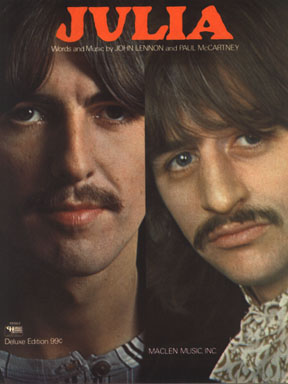 The intro section is eight measures long and consists mostly of John single-tracked as guitarist and vocalist, however a touch of double-tracked vocals can be heard in the sixth measure on the words “just to reach you.” His vocals come in directly on the downbeat of the first measure and maintain mostly a single-note melody line throughout, which is somewhat of a trademark for Lennon compositions (see the verses in “Help!” and the bridge of “Girl” for two examples). The intro section is eight measures long and consists mostly of John single-tracked as guitarist and vocalist, however a touch of double-tracked vocals can be heard in the sixth measure on the words “just to reach you.” His vocals come in directly on the downbeat of the first measure and maintain mostly a single-note melody line throughout, which is somewhat of a trademark for Lennon compositions (see the verses in “Help!” and the bridge of “Girl” for two examples).
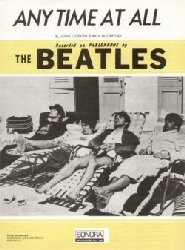 The first verse comes next, which is twelve measures in length and brings in a second acoustic guitar playing an identical pattern to thicken up the sound. The double-tracked acoustic guitar then continues for the rest of the entire song. As the final syllable of the word “Julia” from the intro punches through into the first measure of this verse, a second Lennon vocal appears on top to begin the actual verse lyrics. This layering effect was also used before by John in a Beatles recording (see the verses of “Any Time At All”), however this vocal counterpoint comes across even more effectively. John sings single-tracked for the first eight measures and then double-tracked for the remaining measures on the words “so I sing a song of love, Julia.” The first verse comes next, which is twelve measures in length and brings in a second acoustic guitar playing an identical pattern to thicken up the sound. The double-tracked acoustic guitar then continues for the rest of the entire song. As the final syllable of the word “Julia” from the intro punches through into the first measure of this verse, a second Lennon vocal appears on top to begin the actual verse lyrics. This layering effect was also used before by John in a Beatles recording (see the verses of “Any Time At All”), however this vocal counterpoint comes across even more effectively. John sings single-tracked for the first eight measures and then double-tracked for the remaining measures on the words “so I sing a song of love, Julia.”
 The second verse then appears, the very beginning displaying yet another Lennon vocal overlaying the double-tracked “Julia” from the end of the first verse, there being three John Lennon vocals at that instant. Apart from being fourteen measures long instead of twelve, the arrangement of this verse is the same as the first, the final two measures being strictly instrumental and used as a segue into the bridge that follows. In measures nine and ten, John's vocals are double-tracked but then switch to triple-tracked for the word “Julia” in the eleventh through thirteenth measures. The second verse then appears, the very beginning displaying yet another Lennon vocal overlaying the double-tracked “Julia” from the end of the first verse, there being three John Lennon vocals at that instant. Apart from being fourteen measures long instead of twelve, the arrangement of this verse is the same as the first, the final two measures being strictly instrumental and used as a segue into the bridge that follows. In measures nine and ten, John's vocals are double-tracked but then switch to triple-tracked for the word “Julia” in the eleventh through thirteenth measures.
The bridge then appears, which is ten measures long and continues to feature John's double-tracked guitar and triple-tracked vocals. The held out line “in the sun,” contrasting the descending chord pattern of the guitar, becomes the spine-chilling centerpiece of the entire song.
 The third verse is also fourteen measures long as was the second verse. John sings single-tracked for the first “Julia” and then double-tracked for the second “Julia” of the third and fourth measures. John goes back to single-tracked vocals for measures five through eight and then double-tracked again for “so I sing a song of love, Julia” in measures nine through thirteen. The third verse is also fourteen measures long as was the second verse. John sings single-tracked for the first “Julia” and then double-tracked for the second “Julia” of the third and fourth measures. John goes back to single-tracked vocals for measures five through eight and then double-tracked again for “so I sing a song of love, Julia” in measures nine through thirteen.
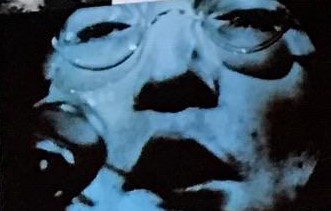 A reprise of the introduction is then heard, the lyrics being different this time however. The first lyric line “When I cannot sing my heart” is single-tracked while the second line “I can only speak my mind, Julia” is double-tracked. This then moves directly into the fourth verse, which is twelve measures long this time, with a third overlapping Lennon vocal in the first measure like we heard at the beginning of the first verse. The vocals are single-tracked for the first eight measures and then triple-tracked for the last four measures as at the end of the second verse. John dramatically raises his usual melody line on the words “song of love” this time around. A reprise of the introduction is then heard, the lyrics being different this time however. The first lyric line “When I cannot sing my heart” is single-tracked while the second line “I can only speak my mind, Julia” is double-tracked. This then moves directly into the fourth verse, which is twelve measures long this time, with a third overlapping Lennon vocal in the first measure like we heard at the beginning of the first verse. The vocals are single-tracked for the first eight measures and then triple-tracked for the last four measures as at the end of the second verse. John dramatically raises his usual melody line on the words “song of love” this time around.
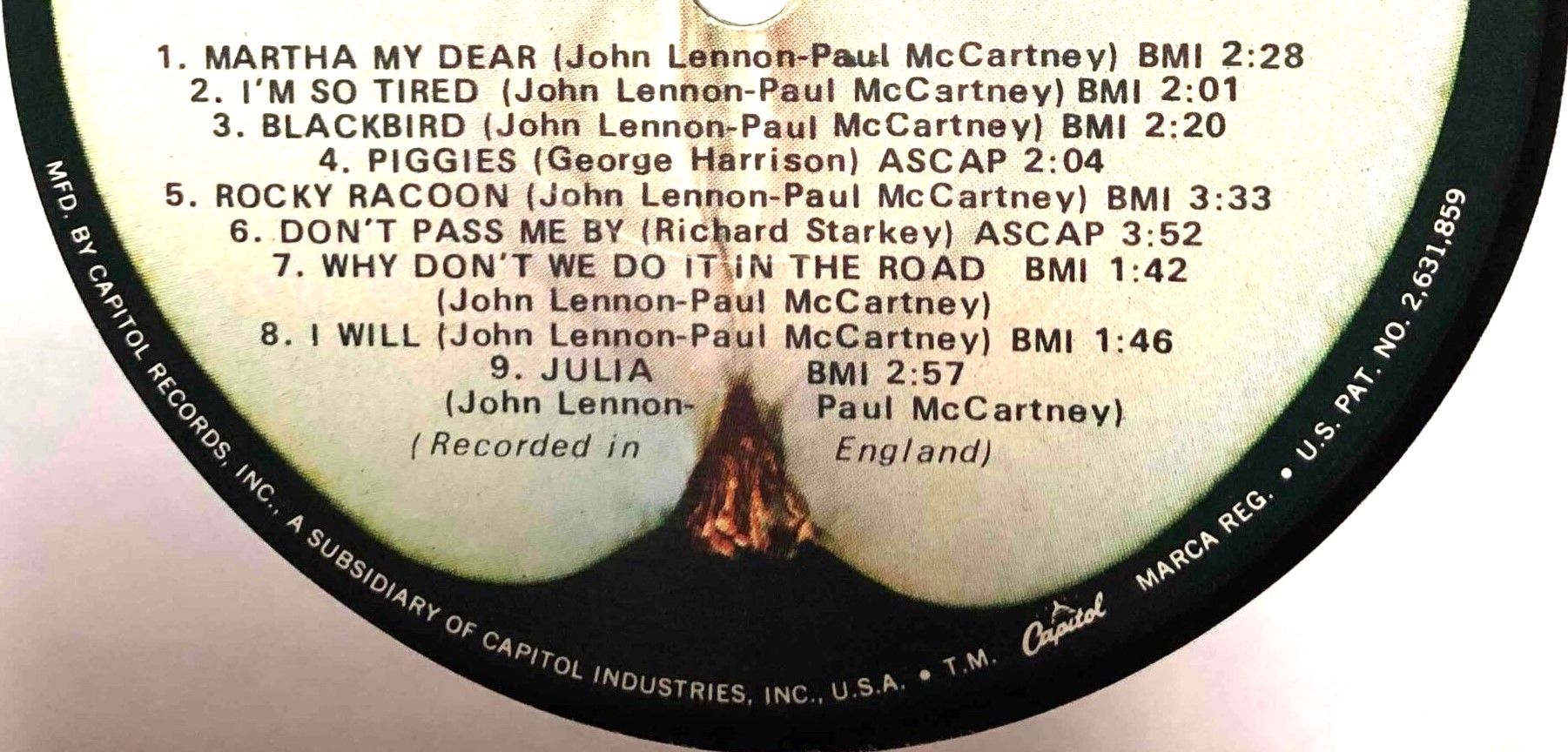 This moves directly into the final verse which is now extended to seventeen measures to encompass the song's conclusion. The first eight measures of this verse are instrumental for the most part, the only vocalizations being triple-tracked humming in the third and fourth measures and triple-tracked “calls me” in the seventh and eighth measures. John then continues the raised melody line for the words “song of love” as in the previous verse, adds the word "for" for the first time, and then shortens the first syllable of “Julia” from what he sang at the end of all the previous verses. However, he repeats “Julia” a second time in the same shortened way, and then a third time with the elongated first syllable as before, all vocals triple-tracked. The final double-tracked acoustic guitar chord then rings out to conclude this extremely diverse second side of the “White Album” with a satisfying sigh. This moves directly into the final verse which is now extended to seventeen measures to encompass the song's conclusion. The first eight measures of this verse are instrumental for the most part, the only vocalizations being triple-tracked humming in the third and fourth measures and triple-tracked “calls me” in the seventh and eighth measures. John then continues the raised melody line for the words “song of love” as in the previous verse, adds the word "for" for the first time, and then shortens the first syllable of “Julia” from what he sang at the end of all the previous verses. However, he repeats “Julia” a second time in the same shortened way, and then a third time with the elongated first syllable as before, all vocals triple-tracked. The final double-tracked acoustic guitar chord then rings out to conclude this extremely diverse second side of the “White Album” with a satisfying sigh.
American Releases
November 25th, 1968 was the release date for "The Beatles," aka the "White Album," which featured "Julia" as the final song on side two. This was the first American Beatles album to be issued only in stereo in the US at the time of release, the mono vinyl edition not hitting the American market until September 9th, 2014. The first compact disc release was on August 24th, 1987, then as a 30th Anniversary limited edition on November 23rd, 1998, and then as a remastered CD on September 9th, 2009. America got its first mono vinyl release of the album on November 9th, 2014, while an amazing new stereo mix of the song was included on the 50th Anniversay "White Album" vinyl release that came out on November 9th, 2018.
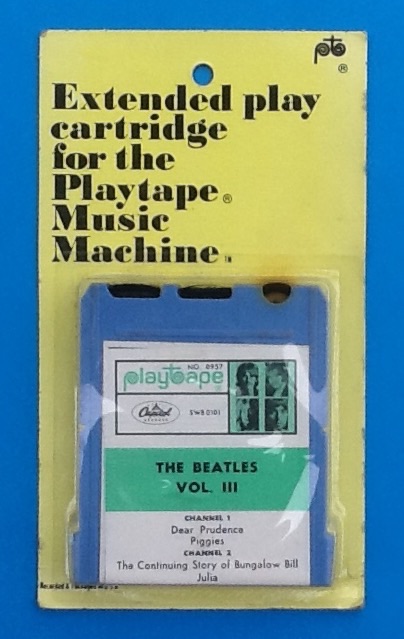 A short-lived format called “Playtapes” was available in the later half of the '60s, these small tapes being created for use in special portable tape players and as standard equipment in certain models of Volkswagens at the time. Since each tape could only contain a small amount of material, Capitol released five volumes sometime in 1969 to include as many songs from the “White Album” as possible, “The Beatles Vol. III” containing “Julia.” A short-lived format called “Playtapes” was available in the later half of the '60s, these small tapes being created for use in special portable tape players and as standard equipment in certain models of Volkswagens at the time. Since each tape could only contain a small amount of material, Capitol released five volumes sometime in 1969 to include as many songs from the “White Album” as possible, “The Beatles Vol. III” containing “Julia.”
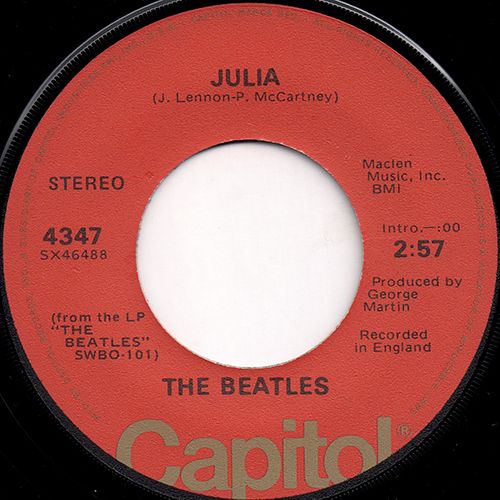 On November 8th, 1976, Capitol issued “Julia” as the b-side to the single “Ob-La-Di, Ob-La-Da” in the US as a follow-up to the Top 10 success of “Got To Get You Into My Life” earlier that year. Neither side of this new single made the Billboard Top 40, but “Julia” was undoubtedly chosen as a b-side on the strength of John's authorship. On November 8th, 1976, Capitol issued “Julia” as the b-side to the single “Ob-La-Di, Ob-La-Da” in the US as a follow-up to the Top 10 success of “Got To Get You Into My Life” earlier that year. Neither side of this new single made the Billboard Top 40, but “Julia” was undoubtedly chosen as a b-side on the strength of John's authorship.
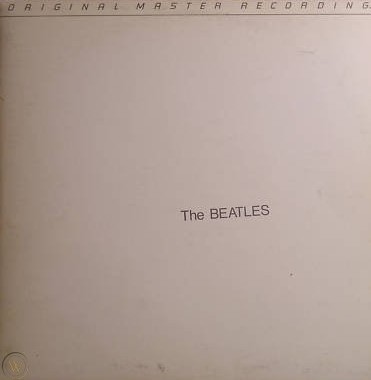 An interesting US vinyl edition of the “White Album” was released on January 7th, 1982, this being manufactured by Mobile Fidelity Sound Lab in Chatsworth, California as part of their "Original Master Recording" series. Their practice was to prepare a new master utilizing half-speed mastering technology from the original master tapes, in this case using the leased sub-master from Capitol Records. This release, which sounded superior to all previous British and American pressings, was packaged in a non-embossed unnumbered cover that did not include the usual poster/lyric sheet or individual Beatles portraits as contained in standard releases. This nonetheless excellent edition of the album was only available for a short time and is quite collectible today. An interesting US vinyl edition of the “White Album” was released on January 7th, 1982, this being manufactured by Mobile Fidelity Sound Lab in Chatsworth, California as part of their "Original Master Recording" series. Their practice was to prepare a new master utilizing half-speed mastering technology from the original master tapes, in this case using the leased sub-master from Capitol Records. This release, which sounded superior to all previous British and American pressings, was packaged in a non-embossed unnumbered cover that did not include the usual poster/lyric sheet or individual Beatles portraits as contained in standard releases. This nonetheless excellent edition of the album was only available for a short time and is quite collectible today.
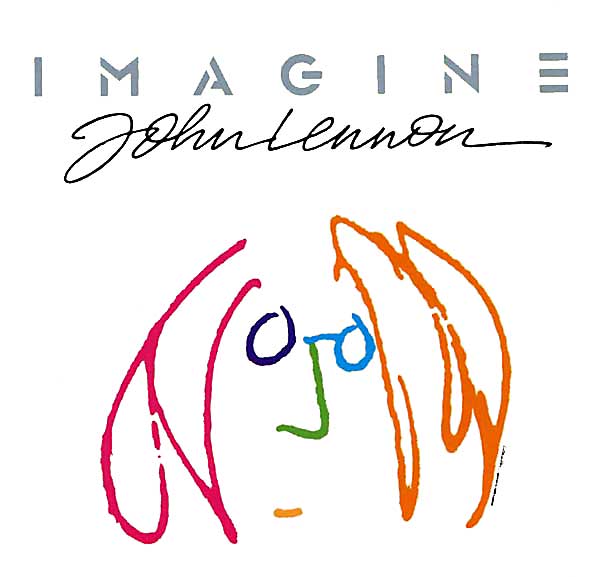 The next release of the song was actually not on a Beatles album, but on the soundtrack for the documentary film “Imagine: John Lennon.” The double album (or single CD), released on October 10th, 1988, featured highlights of his career with The Beatles as well as his solo career. The album peaked at #31 on the Billboard album charts. The next release of the song was actually not on a Beatles album, but on the soundtrack for the documentary film “Imagine: John Lennon.” The double album (or single CD), released on October 10th, 1988, featured highlights of his career with The Beatles as well as his solo career. The album peaked at #31 on the Billboard album charts.
On January 24th, 1996, Capitol reissued the above mentioned single on their Cema “For Jukeboxes Only” series on clear vinyl, this continuing to gain in collectible status as time goes on.
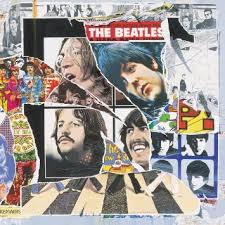 The compilation album “Anthology 3” was released on October 28th, 1996, this set including the unedited “take two” of the original "Julia" session with John on acoustic guitar and Paul conversing with him from the control room. The compilation album “Anthology 3” was released on October 28th, 1996, this set including the unedited “take two” of the original "Julia" session with John on acoustic guitar and Paul conversing with him from the control room.
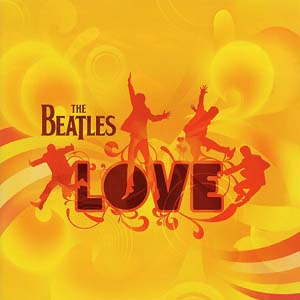 “Love,” the compilation album compiled by George and Giles Martin for the Cirque du Soleil show, was released on November 20th, 2006. As detailed above, an instrumental segment of “Julia” is used at the end of the track “Eleanor Rigby” on this Grammy Award-winning release. “Love,” the compilation album compiled by George and Giles Martin for the Cirque du Soleil show, was released on November 20th, 2006. As detailed above, an instrumental segment of “Julia” is used at the end of the track “Eleanor Rigby” on this Grammy Award-winning release.
The CD box set “The Beatles In Mono” was released on September 9th, 2009, this set featuring the entire “White Album” in mono on compact disc for the first time in America, “Julia” contained therein. The vinyl edition of this box set was first released on September 9th, 2014.
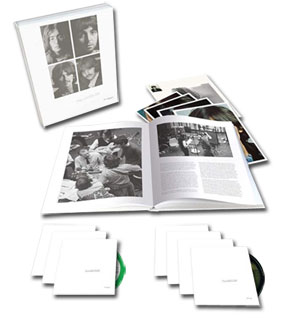 Various editions of the "White Album" were released on November 9th, 2018 to commemorate the 50th Anniversary of its original release. The "Deluxe" edition, which was made available in a 3CD set and a limited edition 180-gram 4LP vinyl set, contained the newly created Giles Martin mix of the "White Album," including a vivid new stereo mix of "Julia" without the excessive bass frequency that detracted from the beauty of the original recording. This "Deluxe" set also included the Esher demo of the song as recorded by John on May 29th, 1968 with Paul's sporadic backing vocals. The "Super Deluxe" 6CD + 1Blu-ray edition also contains the newly discovered rehearsals of "Julia" that were found at the end of the session tape as recorded on October 13th, 1968. Various editions of the "White Album" were released on November 9th, 2018 to commemorate the 50th Anniversary of its original release. The "Deluxe" edition, which was made available in a 3CD set and a limited edition 180-gram 4LP vinyl set, contained the newly created Giles Martin mix of the "White Album," including a vivid new stereo mix of "Julia" without the excessive bass frequency that detracted from the beauty of the original recording. This "Deluxe" set also included the Esher demo of the song as recorded by John on May 29th, 1968 with Paul's sporadic backing vocals. The "Super Deluxe" 6CD + 1Blu-ray edition also contains the newly discovered rehearsals of "Julia" that were found at the end of the session tape as recorded on October 13th, 1968.
Live Performances
No live performances of “Julia” by any member of The Beatles have ever taken place.
Conclusion
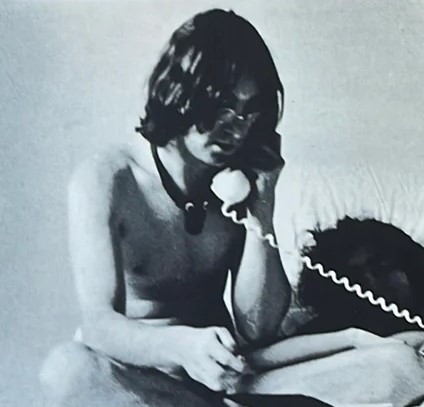 Author Tim Riley, in his book “Tell Me Why,” perfectly describes the beauty of John's song “Julia”: “The voice-and-guitar interplay is expert, independent yet complementary...The private world he reveals alone with his guitar is like a therapeutic confessional.” The abrasive lyrics and vocalizations of Lennon elsewhere on the album are contrasted by this, the most tender and Zen-like song of the album – arguably of the entire Beatles catalog. Author Tim Riley, in his book “Tell Me Why,” perfectly describes the beauty of John's song “Julia”: “The voice-and-guitar interplay is expert, independent yet complementary...The private world he reveals alone with his guitar is like a therapeutic confessional.” The abrasive lyrics and vocalizations of Lennon elsewhere on the album are contrasted by this, the most tender and Zen-like song of the album – arguably of the entire Beatles catalog.
Upon being mesmerized by this track, one can easily wonder why John would have waited until the very end of the four-and-a-half month recording process for the “White Album” to finally bring this masterpiece to the recording studio. Was he not proud of it?
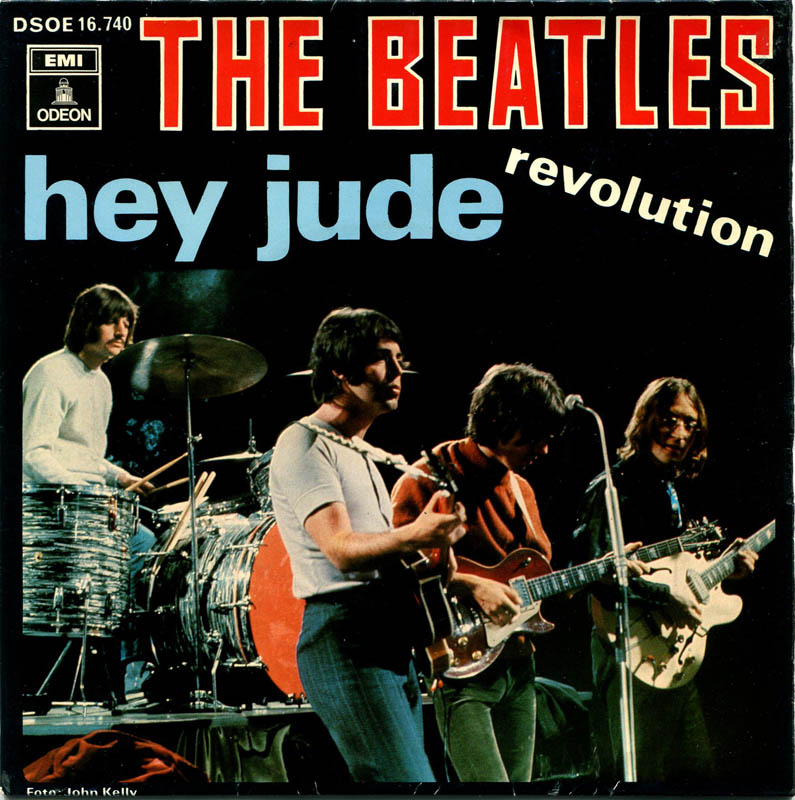 The following quote from Lennon from around the time of the release of the “White Album” makes it quite clear what his intentions were with regard to this new release: “What we're trying to do is rock 'n' roll...get on with rocking because rockers is what we really are. You can give me a guitar, stand me up in front of a few people; even in the studio, if I'm getting into it, I'm just doing my old bit...It's just natural. Everybody says we must do this and that but our thing is just rocking...That's what this new record is about. Definitely rocking.” The following quote from Lennon from around the time of the release of the “White Album” makes it quite clear what his intentions were with regard to this new release: “What we're trying to do is rock 'n' roll...get on with rocking because rockers is what we really are. You can give me a guitar, stand me up in front of a few people; even in the studio, if I'm getting into it, I'm just doing my old bit...It's just natural. Everybody says we must do this and that but our thing is just rocking...That's what this new record is about. Definitely rocking.”
Of all of the songs John premiered to the group in his "Kinfauns" demos of late May of 1968, it was the “rockers” that he made sure got attention first, such as “Revolution,” “Everybody's Got Something To Hide Except Me And My Monkey” and “Yer Blues.” It was more important to him to show The Beatles again as “rockers” and move away from their depiction as the psychedelic pied pipers of 1967.
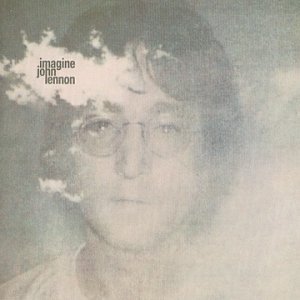 John's recently written ballads that he also premiered at "Kinfauns," like “Julia” and “Child Of Nature” were put on the back-burner until all the rockers were done. Sadly, the gorgeously melodic “Child Of Nature” was never recorded for the album at all, instead being resurrected as “Jealous Guy” in 1971 on his solo album “Imagine.” Lucky for us, at the very last minute, John decided to tackle “Julia” in the studio and include it on the album, treating us to one of the most beautiful songs he had ever written. John's recently written ballads that he also premiered at "Kinfauns," like “Julia” and “Child Of Nature” were put on the back-burner until all the rockers were done. Sadly, the gorgeously melodic “Child Of Nature” was never recorded for the album at all, instead being resurrected as “Jealous Guy” in 1971 on his solo album “Imagine.” Lucky for us, at the very last minute, John decided to tackle “Julia” in the studio and include it on the album, treating us to one of the most beautiful songs he had ever written.
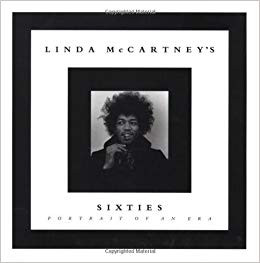 Regarding the opinion of many that Lennon wrote the rockers and McCartney wrote the tender ballads, Paul's wife Linda, in her book "Sixties: Portrait Of An Era," describes it best. "I think people have always got it wrong about Paul and John being such opposites. In my opinion, when it came to creativity, they weren't that different. They both had a tough side and a sensitive side." "Julia," without a doubt, epitomizes John's sensitive side. Regarding the opinion of many that Lennon wrote the rockers and McCartney wrote the tender ballads, Paul's wife Linda, in her book "Sixties: Portrait Of An Era," describes it best. "I think people have always got it wrong about Paul and John being such opposites. In my opinion, when it came to creativity, they weren't that different. They both had a tough side and a sensitive side." "Julia," without a doubt, epitomizes John's sensitive side.
Song Summary
"Julia"
Written by: John Lennon / Paul McCartney
- Song Written: February – April, 1968
- Song Recorded: October 13, 1968
- First US Release Date: November 25, 1968
- First US Album Release: Apple #SWBO-101 “The Beatles”
- US Single Release: Capitol #4347 (b-side to "Ob-La-Di, Ob-La-Da")
- Highest Chart Position: n/a
- British Album Release: Apple #PCS 7067-7068 “The Beatles”
- Length: 2:57
- Key: D major
- Producer: George Martin
- Engineers: Ken Scott, John Smith
Instrumentation (most likely):
- John Lennon - Lead and Backing Vocals, Acoustic Guitar (1964 Gibson J-160E)
Written and compiled by Dave Rybaczewski
|
IF YOU WOULD LIKE TO MAKE A DONATION TO KEEP THIS WEBSITE UP AND RUNNING, PLEASE CLICK BELOW!
Sign Up Below for our MONTHLY BEATLES TRIVIA QUIZ!
|